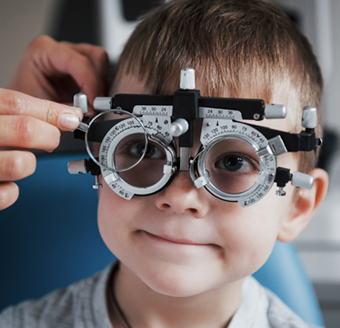LASIK is an acronym Laser Assisted In-Situ Keratomileusis, the most technologically advanced procedure used to correct nearsightedness, astigmatism, and farsightedness. An excimer laser is used to precisely sculpt the front surface of the eye to help eliminate or reduce a person's dependence on glasses or contact lenses. At this time, over one million laser vision correction procedures have been performed throughout the world!
In addition to LASIK, there are other vision correction procedures such as PRK, RK and the intrastromal ring. LASIK continues to be the procedure that is most commonly chosen by doctors and patients alike.

LASIK is considered the procedure of choice for the following reasons:
- The procedure itself is painless and only takes about 10 minutes
- The surface of the cornea is preserved so the results are almost immediate
- Very little discomfort after surgery
- Reduced risk of infection and the need for long-term use of eye drops
- Lower risk of corneal haze or scarring
- Fewer post-operative care visits
- The ability to treat a wider range of prescriptions with permanent results
What is LASIK like?
 Every LASIK candidate will receive a very thorough preoperative exam to precisely determine the amount of prescription that is to be corrected and to ensure that the eyes are healthy.
Every LASIK candidate will receive a very thorough preoperative exam to precisely determine the amount of prescription that is to be corrected and to ensure that the eyes are healthy.
- The procedure is performed in a modern outpatient surgical center. You will be seated in a recliner type chair and you will receive a topical numbing drop in each eye.
- A special device is used to help you control your blinking.
- A very thin flap of tissue is made using a microkeratome or laser, the flap is lifted out of the way and then the computer operated laser precisely shapes the cornea.
- The flap is then laid back in place and the body "seals" the tissue within 3 days.
The entire procedure takes about 3 minutes per eye and the results are permanent! Your vision is so clear that in most cases, your can drive yourself to your first post-operative visit the next day.
What can go wrong?
There is a very small risk of infection which can be easily handled by antibiotics. Common concerns are some mild discomfort for the first 24 hours and the increase in night glare that usually subsides within the first few months following LASIK.
Most vision and medical insurance companies do not provide benfits or coverage for laser vision correction. However, LASIK is considered a medical procedure that qualifies for income tax deductions and flexible spending account funds.



